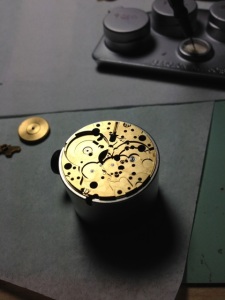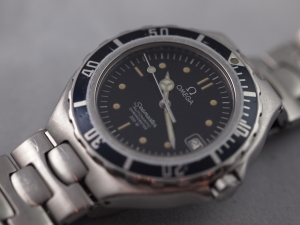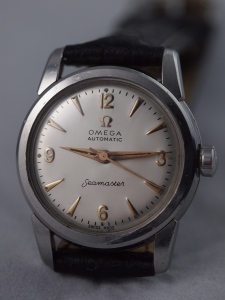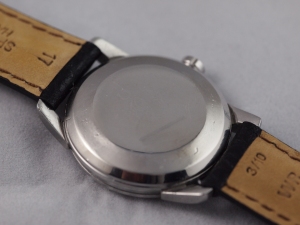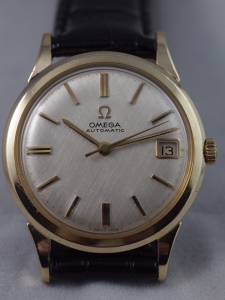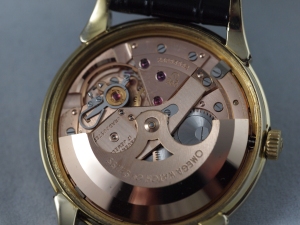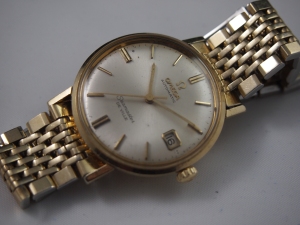In an earlier post, I discussed my general aversion to wearing metal bracelets on a watch for a prolonged period of time. This most recent watch provides an all too common example of everything I described in that post. Band aside however, this is a great vintage Omega that was in dire need of some TLC.
A friend of mine complained that his watch was running fast and that the band pins kept coming out. The problem had gotten so bad that he could no longer wear the watch. I took the watch in and got to work on it. First I fully disassembled the movement to check for wear and damage. Fortunately only two pieces needed to be swapped out. The gear that transmits power from the rotor to the mainspring and the bearings that the rotor revolves around had never been replaced since this watch was purchased in the 80s. As a result they had experienced significant wear and needed to be replaced.
After a full cleaning, reassemble, and regulation the watch was running back within chronometer specs. Even knowing the timing read out, the timing machine can only tell you half the story, and after its run and regulation on it I put it on a final test winder. It ran perfectly through its power reserve but the problem appeared to be that it would not wind itself at all. I removed the caseback and noticed a problem: the retaining ring that connects the rotor to its bearings was off its track. As a result the rotor was not turning properly. After correcting the problem, I put it back on the winder only to find the same problem again. This time however, the ring had come off entirely. This time my solution was to buy the proper tool to secure the ring. As soon as it arrived, I secured the ring properly and sure enough it solved the problem and the watch is running and winding perfectly.
Next I got to the band. The time on the winder had caused the loose pins to jut out just a bit. I removed these one by one and replaced them with pressure pins. Although this did not decrease the give in the band, it made sure that my friend could wear it with a bit less fear of it falling off. This is unfortunately just a temporary solution. Once the metal stretches, it is almost impossible to get it to stop. Using ever so slightly larger retaining pins will only work until the metal stretches out some more. There are really just two long-term solutions: get a leather band made for it, or track down another better condition band. Neither of these options are cheap, but they can increase the wearability by decades.
The piece itself is famously known as the Seamaster 200m “Pre-Bond.” This name came because the next Seamaster model was featured as James Bond’s watch in Goldeneye in 1995. Fitted with an ETA 2892-2 (or Omega 1111) Chronometer movement, this watch is a solidly built piece even though it is not one of the old-school in-house Omega movements that I love. It is still a well-engineered and very intuitively designed movement, allowing for simple assembly (and plenty of readily available parts if needed.)
All back together, it is running well and the band will hold together. That being said, I was unable to do much to improve the external condition except for a cleaning. Most importantly however, for its owner, a very sentimental piece is wearable and running well.

